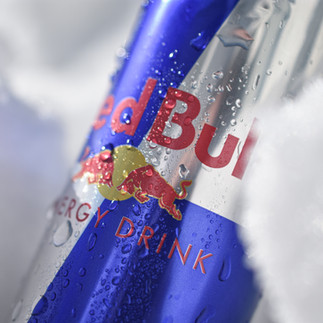Why distinctive brand assets matter and how to design them for your business
- Josh Lobo

- Feb 16
- 3 min read
When you think of Nike, what comes to mind? The swoosh. Just do it. That unmistakable combination of simplicity and power. Apple? A clean, bitten apple logo and minimalist design. Red Bull? The charging bulls and high-energy vibes. These brands didn’t become iconic by accident. They built distinctive brand assets that stuck in people’s minds.
For small and medium businesses, this isn’t just a strategy for the big guys. You can create brand assets that make you stand out, no matter your size.
Defining distinctive brand assets
Distinctive brand assets are the unique elements that help customers immediately recognise your brand. They can be visual, such as logos, colours, and fonts, but they can also be auditory or conceptual. A brand asset might be a tagline, a jingle, an aural sting like Intel’s startup sound, a colour like Cadbury’s purple, a character like Ronald McDonald, or even an overarching philosophy. The key is consistency—using them over and over again so they become cemented in your audience’s memory.
As Jenni Romaniuk, author of Building Distinctive Brand Assets, explains: “Brand assets should be unique, famous, and used consistently.” Byron Sharp, in How Brands Grow, reinforces this by showing that mental availability—being top of mind—drives brand growth.
The importance of standing out
In a crowded market, customers don’t have time to think deeply about every brand they come across. They make quick decisions based on familiarity. If they recognise your brand, they’re more likely to trust and choose it. As prominent brand and marketing strategist Mark Ritson puts it: “Branding is simply memory management.”
Building brand assets for your business
1. Establish your core identity
Your brand identity includes elements like logo, colours, and fonts, but it can also extend beyond visuals. Consider how you sound—do you have a recognisable jingle, tagline, or sonic cue? Think about your brand’s personality and how it expresses itself across all touchpoints.
2. Craft a memorable brand style
Beyond the basics, build a brand that evokes emotion. Apple’s brand is all about sleek, modern minimalism. Red Bull leans into high-energy, extreme sports culture. What feeling do you want your brand to evoke? Your style should be clear in both visual and non-visual assets.
3. Differentiate from your competitors
Brian Collins, the designer behind iconic brand work for companies like Spotify and Target, said: “Good branding isn’t about standing out. It’s about creating meaning.” If your brand looks, sounds, and feels just like your competitors, you become forgettable. Find what makes you different and amplify it.
4. Reinforce your brand across all channels
Once you have your brand assets, apply them consistently everywhere—your website, social media, packaging, ads, and customer touchpoints. This repetition builds familiarity. Think of how McDonald’s golden arches or Netflix’s opening chime instantly signal the brand.
5. Keep it simple and recognisable
The best distinctive brand assets are easy to recall. Nike’s swoosh is just a simple tick. McDonald’s has a single letter—the golden ‘M’. Simplicity helps customers recognise and remember you faster. Avoid overcomplicating your brand identity.
The power of repetition
Your brand assets only become distinctive if you use them consistently over time. The more you reinforce them, the stronger they get. Imagine if Coca-Cola randomly changed its logo or switched its signature red to purple—it would confuse customers. Stick to your brand identity and give it time to grow.
Creating a brand that sticks
Building distinctive brand assets isn’t about being flashy—it’s about being unforgettable. Whether you’re a small business or an established company, strong branding helps you stand out, stay top of mind, and win more customers.
If you want help creating a distinctive brand identity for your business, contact Lobos to get started.





































